Study suggests statins could help fight gum disease
Powered by WPeMatico
Powered by WPeMatico
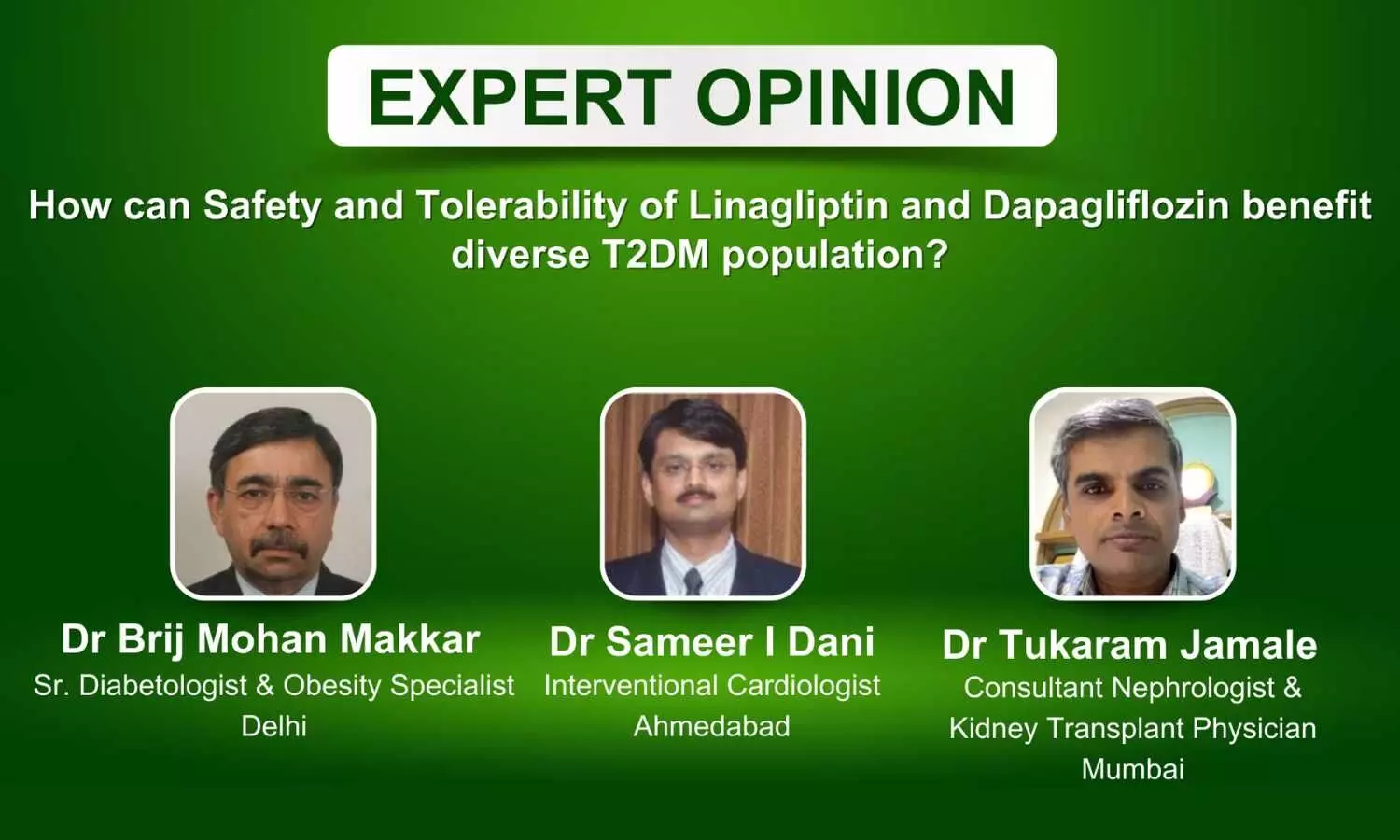
Presenting the Evergreen Talk Series featuring Dr. Brij Mohan Makkar, a Senior Diabetologist and Obesity Specialist from Delhi, Dr Sameer I. Dani, an Interventional Cardiologist from Ahmedabad, and Dr. Tukaram Jamale, a Nephrologist and Kidney Transplant Physician who serves as the Head of the Department at KEM Hospital Mumbai. They provide their insights on the use of Linagliptin, Dapagliflozin, and Metformin for diabetic patients.
Bringing viewpoints from the different specialities of Diabetology, Cardiology and Nephrology, they share their views about How can Safety and Tolerability of Linagliptin and Dapagliflozin benefit diverse T2DM population.
Dr Brij Mohan Makkar: The major issue that troubles people is the
increased risk of genito UTI infections, which can largely be taken care of by
maintaining good hygiene. If somebody gets a genito UTI, it can be treated
easily, and if somebody is experiencing recurrent genito UTIs, you can
discontinue this medication. Otherwise, largely they are very safe molecules
and have been shown to be safe even in people who have CKD or advanced liver
disease, elderly, and so on. As far as safety is concerned, I don’t think there
is a major concern, another important thing is when you are combining
a gliptin and SGLT2i, studies have shown that the risk of genito UTI further
goes down. So, it is kind of again a beneficial effect when you are combining
these two molecules to provide not only synergy but also cut down the side
effects.
Dr Sameer I Dani: Dapagliflozin
safety signals are there with extensive evidence. Dapagliflozin produces
cardiovascular benefits in terms of improved function but also includes
mortality or survival benefits in patients with HF. Linagliptin, out of all
DPP4 inhibitors, all gliptins, I think Linagliptin has maximum safety evidence
for renal outcomes. Linagliptin also has clear CV neutrality, in that sense
that it does not show any concerns as far as cardiovascular safety is
concerned, for instance, we are not there, so
that way I think combination works out very well in terms of their evidence as
far as safety is concerned.
Dr Tukaram Jamale: When
practically using these agents individually, they are very safe. When combining
them, it is better to proceed step by step and monitor how therapy is tolerated
by the patient and if any untoward effects are encountered. Most of the time,
you will be able to introduce all of these evidence-based therapies, but then
one has to be careful in monitoring them serially. Subsequently, if they are
introduced, they can be put to the best use.
Powered by WPeMatico
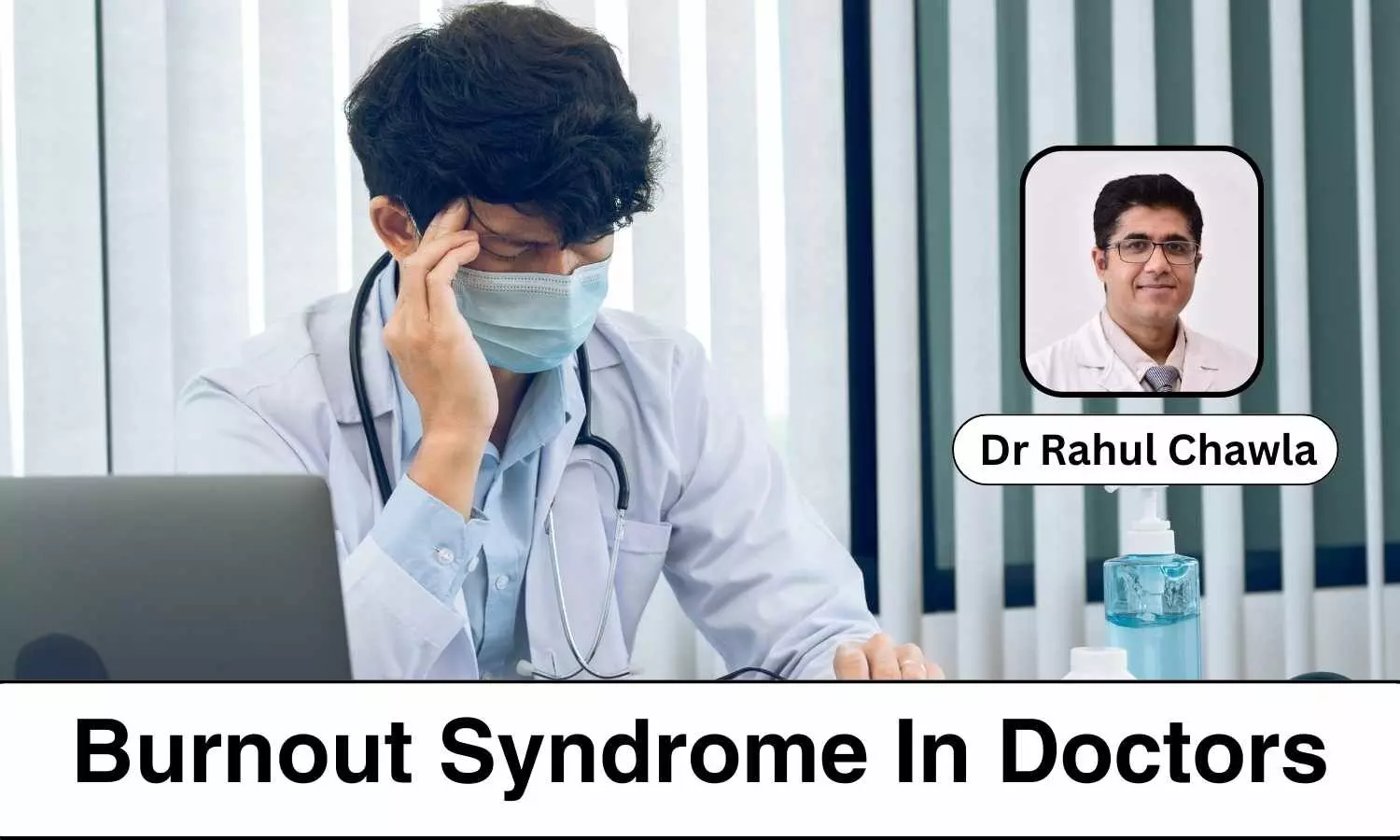
What is Burnout Syndrome (BOS)?
Burnout Syndrome is a subjective feeling of being
emotionally drained, feeling low and unable to keep with the incessant demands
at work place. It occurs in individuals without any prior history of
psychological or psychiatric disorders. BOS is often triggered by toxic work
environment, stress at work place and discrepancy between the expectations of
the employer or boss and work output of the employee.
Burnout Syndrome is highly prevalent in medical schools and
hospitals especially among residents and junior doctors because of the huge
load of studies, high patient load, unrealistic demands of senior consultants
on one hand and patients on the other and the dissatisfaction for not giving
enough time to themselves and their families.
Medical profession is known to have a toxic senior junior
relationship. There is a tendency of the system to put most of the manual work
on the residents. The strict 24 hours and 36 hours duty leaves very little time
for self-care, family and relationship, which makes them emotionally drained.
Due to the constant harassment, they even start hating their
jobs and seek a way out. The toxic workspace is a breeding ground for
depression and anxiety which in some instances leads to suicide.
How to prevent and manage Burnout Syndrome in workplace?
Burnout Syndrome hinders growth of an individual in the
organisation. It not just affects his/her professional life, but personal life
as well. It can lead to depression, anxiety and even suicides.
1. As an employer, hospital administrator or head of the
department, it is important to identify those who are having or likely to be
having Burnout Syndrome
2. Talk to the residents and listen to their complaints with
compassion
3. It’s better that they let the residents have their time
for family, relationships and for themselves.
4. For residents, it is imperative that they take support of
someone they trust, could be a faculty or co-worker or anyone outside the
hospital.
5. Take regular holidays and spend time with family and
friends
6. Take short breaks while working and do deep breathing,
relaxation or just go outside for a walk or fresh air.
7. If unable to deal with mood changes, seek professional
help. Do not hesitate to consult a psychiatrist.
Mental health is still a taboo in medical colleges and
hospitals. Nobody discusses the issue openly. Constant harassment impairs the
quality of work which in turn leads to more scoldings at rounds and this vicious
cycle goes on like that. It is important for us to break this chain and get rid
of this mentality of ‘just because we have faced it, our juniors must face that
as well’.
Powered by WPeMatico
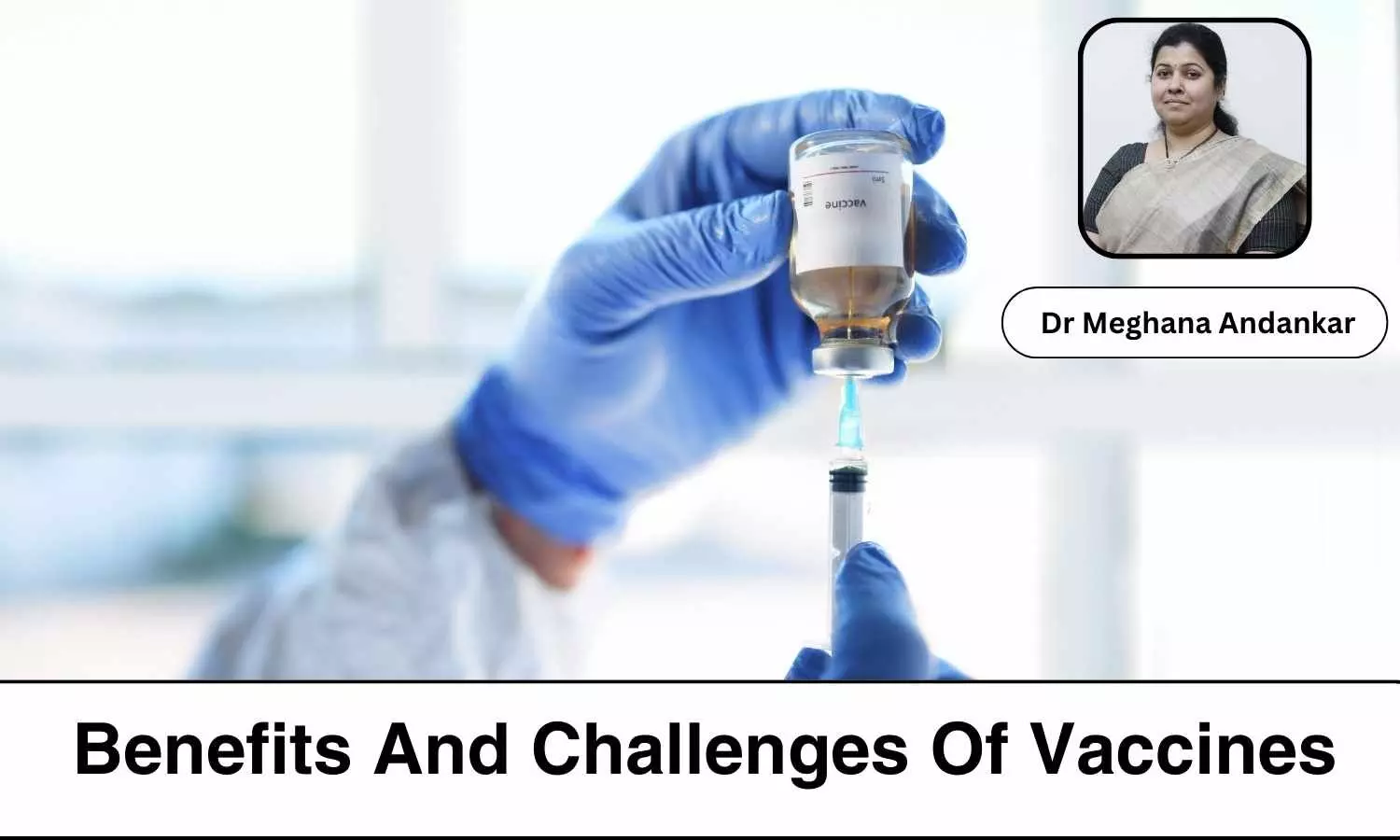
Introduction
Vaccines are
like superheroes for our bodies. They protect us from dangerous diseases and
have made our lives much healthier. But sometimes, even superheroes face
challenges. Let’s explore how vaccines work, what amazing things they’ve done,
and the problems that still need to be tackled.
How Vaccines
Help?
Picture vaccines
as tiny teachers for our immune system. They contain weakened or killed
versions of germs that cause diseases. When we get vaccinated, our body learns
to recognize these germs and builds defences against them.
So, if we ever come
across real germs, our body can swoop in and defeat them before they have a
chance to harm us. It’s like having a secret weapon inside us, ready to spring
into action whenever needed.
Vaccine
Success Stories
Vaccines have
achieved some incredible victories in the battle against diseases. One of their
biggest wins was wiping out smallpox, a deadly disease that once haunted
humanity. Thanks to vaccines, smallpox no longer threatens us.
Vaccines have
also come close to eliminating other diseases like polio, measles, and rubella
in many places around the world. Because of vaccines, fewer people get sick,
and fewer lives are lost to these once-deadly diseases.
Challenges
Vaccines Face
Vaccine
development encounters formidable challenges, particularly with diseases prone
to mutation. Failure to adhere strictly to the vaccine production process can
precipitate disease outbreaks. The complexities of maintaining the cold chain
during storage and transportation further exacerbate these challenges.
Despite
concerted efforts, the scientific community is yet to develop a vaccine for
HIV. Furthermore, vaccines come in two forms: live and dead. Improper
administration of live vaccines can inadvertently induce disease in recipients.
Tragically, instances of children succumbing to vaccination underscore the
gravity of this issue.
Facing New
Threats
Vaccine
development faces daunting challenges, especially with diseases prone to
mutation like swine flu and bird flu. Strict adherence to the vaccine
production process is essential to prevent disease outbreaks. The intricate
logistics of maintaining the cold chain during storage and transportation
further complicate matters.
Despite extensive efforts, vaccines for diseases
such as HIV remain elusive. Moreover, vaccines must be produced in record time
due to the emergence of new diseases like COVID-19 and its variants.
Although
scientists have developed COVID-19 vaccines at an unprecedented pace, achieving
widespread vaccination has proven difficult. This inequality in access hampers
global efforts to curb the virus’s spread.
Looking to
the Future
Emerging
technologies, like nanoparticle-based vaccines or patches, offer potential for
more convenient and effective vaccination methods. Additionally, there’s a
growing commitment to ensuring fair access to vaccines worldwide and better
preparation for future outbreaks. These combined efforts aim to improve
vaccines and promote global health.
Conclusion
Vaccines have
done amazing things for our health, but they still have work to do. By fighting
vaccine fears, tackling new diseases, and embracing new technology, we can keep
vaccines as our trusted protectors against dangerous diseases. Let’s keep
supporting the superheroes of our immune systems!
Powered by WPeMatico
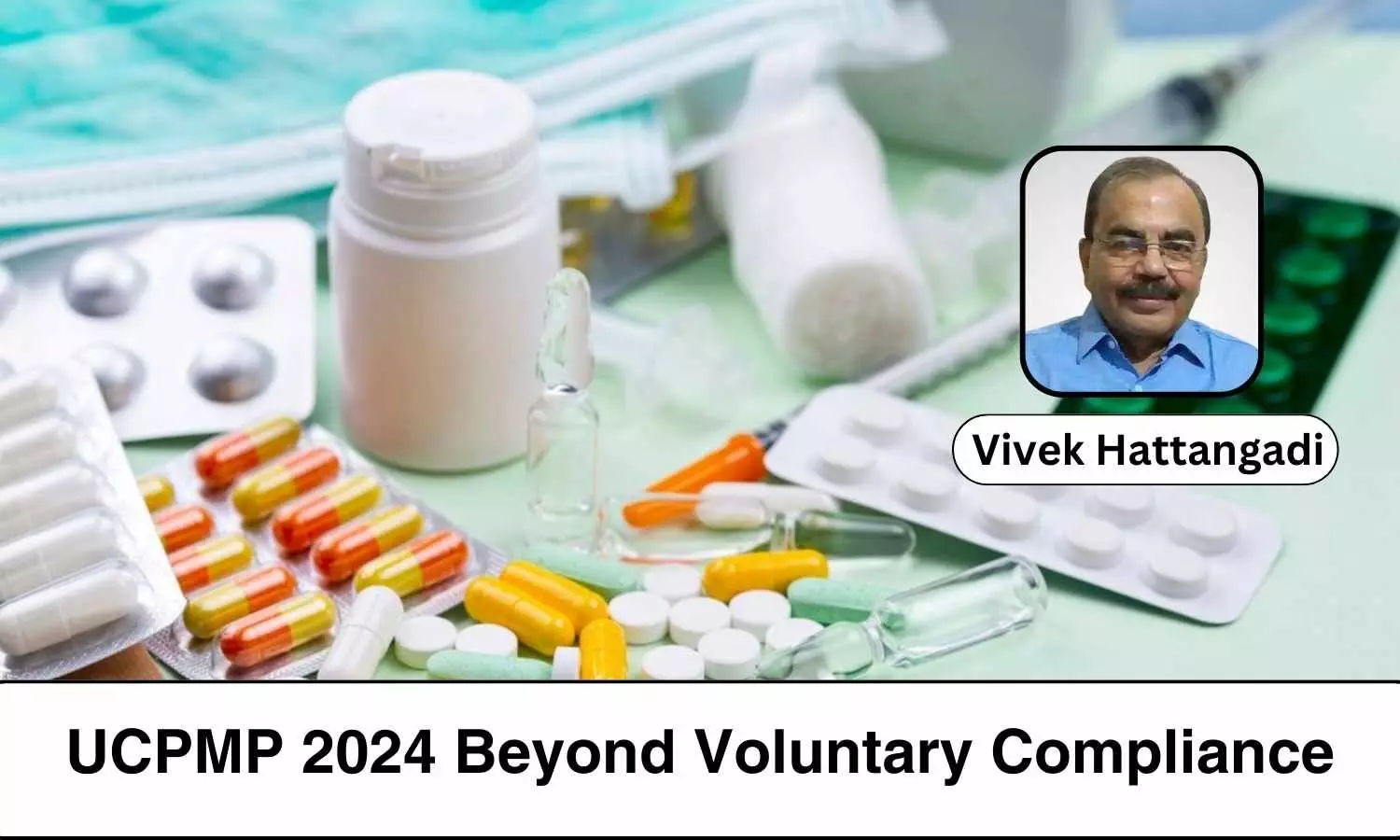
Preamble
In the landscape of pharmaceutical
marketing ethics, the UCPMP (Uniform Code of Pharmaceutical Marketing
Practices) has been a cornerstone, albeit with limited efficacy.
The inception of UCPMP-2014 as a
voluntary framework aimed to instil Good Marketing Practices within the Indian
pharmaceutical industry, yet its lack of enforcement mechanisms rendered it
toothless against transgressions.
Fast forward to March 2024, the
emergence of UCPMP-2024 introduces notable revisions, including mandatory
disclosure of expenses for medical promotion and grants to healthcare
professionals.
While these changes signify
progress, the efficacy of such voluntary measures remained debatable.
History of UCPMP
This editorial delves into the
evolution of UCPMP and explores the necessity for more robust legal frameworks
to truly deter unethical practices within the pharmaceutical sector.
On December 12, 2014,
the central government introduced the Uniform Code of Pharmaceutical Marketing
Practices (UCPMP-2014), intended for voluntary adoption and adherence by
pharmaceutical enterprises concerning marketing activities.
It was explicitly
stated that failure to effectively implement the code by pharmaceutical
associations/companies could prompt the government to enact it as a statutory
provision.
Despite the initial
stipulation of a six-month duration for the UCPMP-2014, subsequent extensions
by the Department of Pharmaceuticals (DoP), totaling five instances, culminated
in the extension of the UCPMP Code, 2014, until further directives were issued
on August 30, 2016. This series of extensions suggested a lack of enthusiasm on
the part of the DoP towards the implementation of the UCPMP-2014.
The implications for the
pharmaceutical industry were unequivocal, as evident from the prevailing
circumstances.
In the year 2021, the
Federation of Medical and Sales Representatives Association of India,
functioning as a non-governmental organization (NGO), lodged a petition with
the Supreme Court of India. Their plea sought the formulation of comprehensive
directives aimed at curbing unethical marketing strategies employed by
pharmaceutical entities.
This petition was made with the intent to fill the
regulatory void until the enactment of specific legislative measures by the
Parliament. Presently, the case remains under consideration by the Court,
awaiting its final adjudication.
The UCPMP-2014 aimed to create a level playing field for
pharmaceutical companies, encouraging innovation and patient-centered marketing
practices. However, practical challenges must be addressed for effective
enforcement.
Stricter regulations covering indirect influences, and robust
oversight mechanisms are essential to achieving UCPMP’s objectives and
promoting ethical practices in pharmaceutical and medical devices marketing.
The UCPMP-2014 had the intent of fostering equitable
conditions among pharmaceutical companies, fostering innovation, and advocating
for patient-centric marketing methodologies. Nevertheless, the realization of
its objective’s hinges upon the resolution of pragmatic hurdles.
Enforcing its
provisions effectively necessitates the implementation of more stringent
regulations encompassing indirect influences, alongside the establishment of
robust oversight mechanisms.
These measures are imperative for ensuring the
attainment of UCPMP-2014 goals and fostering a culture of ethical conduct
within the realms of pharmaceutical and medical devices marketing.
The Department of Pharmaceuticals (DoP) issued a
new policy on March 12, 2024. This policy, known as the Uniform Code for
Pharmaceutical Marketing Practices (UCPMP-2024), establishes guidelines for the
ethical promotion of pharmaceuticals.
The DoP directed all pharmaceutical
associations (like IPA, OPP; IDMA) to disseminate the UCPMP-2024 to their
members and ensure its strict compliance.
The UCPMP-2024 outlines acceptable practices for
activities such as interactions with healthcare professionals, distribution of
informational materials, and providing samples. It also establishes a framework
for addressing unethical marketing practices. This policy aims to promote
ethical conduct within the pharmaceutical industry.
Hopes with UCMP-2024
UCPMP-2024) establishes ethical guidelines for drug
promotion. It defines acceptable activities for medical representatives, brand
materials, samples, and interactions with healthcare professionals.
Additionally, it provides a framework for addressing unethical marketing
practices.
Here are some of the key and the new features of UCPMP-2024.
However, exceptions are made for
educational items such as books, calendars, and clinical guidelines, provided
their value does not exceed Rs. 1000 and they serve professional purposes
without independent commercial value.
Additionally, this means medical professionals can receive travel and
hospitality support for participating as speakers in Continuing
Medical Education (CME) or Continuing Professional Development (CPD) programs.
These measures aim to maintain the integrity of healthcare decision-making
processes and ensure that medical professionals prioritize patient welfare over
personal gain.
These programs must be held within the country and can be
organized by pharmaceutical companies independently or collaboratively.
Companies sponsoring such programs are required to
disclose their expenditures on a dedicated website. Additionally, organizers
must also publicly display a statement outlining funding sources and the
selection process for participants and speakers.
It’s important to note that all parties involved,
including the company, organizers, speakers, and participants, must comply with
the Income Tax Act (Section 194R) to ensure financial transparency and accountability.
These interactions must
prioritize patients’ well-being and the patient interest is not compromised.
It upholds HCP integrity,
adhering to relevant National Medical Commission (NMC) regulations and
guidelines. Research must be approved by a competent authority and conducted at
a designated location, if applicable.
Expenditure on
research by pharmaceutical companies is an allowable expenditure subject to the
provisions of the Income Tax Act 1961 as amended from time to time.
UCPMP-2024 further restricts pharmaceutical companies or
their agents including stockists and distributors from offering travel or
hospitality to HCPs or their families, except for approved speakers at
Continuing Medical Education (CME) or Continuing Professional Development (CPD)
events. This ensures unbiased interactions and discourages undue influence.
The UCPMP-2024 prohibits cash or monetary grants to
healthcare professionals or their families.
When it lacks clarity on
interactions with HCPs, adhere to the Indian Medical Council Regulations
(Professional Conduct, Etiquette, and Ethics) of 2002.
The Ethics Committee for Pharmaceutical Marketing Practices (ECPMP)
within each association holds authority to take necessary actions its members,
such as suspension or expulsion, upon confirming a breach of the UCPMP-2014.
When governmental intervention is required, recommendations are forwarded
through the DoP.
The UCPMP-2024 establishes a new appeals process. If parties
disagree with a decision by the ECPMP, they can appeal to the Apex Committee
for Pharma Marketing Practices (ACPMP). The ACPMP has the authority to impose
penalties or refer matters to relevant government agencies. Their decision is
final and binding on all parties involved.
Under UCPMP-2024 CEOs of pharmaceutical companies are held
accountable for following it meticulously. They must submit a yearly
self-declaration within two months of their fiscal year-end. This declaration
can be uploaded to their industry association’s website or directly to the
government’s UCPMP-2014 portal if they are not part of an association.
Conclusion
In
the realm of pharmaceutical marketing, a crucial aspect often overlooked is the
integration of a patient-centered approach.
UCPMP-2024,
while comprehensive, fails to acknowledge the pivotal role of
patient-centricity in promoting healthcare solutions. A patient-centered
marketing approach prioritizes the needs, preferences, and well-being of
patients above all else.
By
fostering open communication, understanding individual experiences, and
tailoring solutions accordingly, this approach enhances trust and engagement
within the healthcare ecosystem. Empowering patients with information and
involving them in decision-making processes not only improves treatment
adherence but also fosters a sense of ownership over their health journey.
Incorporating
patient narratives, feedback mechanisms, and support networks into marketing
strategies can bridge the gap between pharmaceutical companies and the
individuals they serve.
Embracing
a patient-centered mindset isn’t merely a moral imperative but a strategic
imperative for driving sustainable healthcare outcomes and fostering long-term
partnerships built on empathy and mutual respect.
Nevertheless,
UCPMP-2024 represents a significant advancement in ensuring ethical conduct
within the pharmaceutical industry. This code establishes clear guidelines for
marketing practices, fostering a more transparent and responsible environment.
We
must seriously consider the argument put forth by Sudhansh Pant, a former Joint
Secretary at the Department of Pharmaceuticals (DoP). His experience positions
him well to assess the potential of public exposure in deterring unethical
marketing practices.
The UCPMP-2024 can be significantly strengthened through
robust enforcement mechanisms that include the public disclosure of violations.
The threat of reputational damage can serve as a powerful motivator for both
pharmaceutical companies and medical professionals to adhere to the code’s
principles.
The Physician
Payments Sunshine Act – USA
The Physician
Payments Sunshine Act USA serves as a potential model for nations seeking to
promote ethical conduct among medical professionals and responsible marketing
practices within the pharmaceutical industry.
The Physician Payments Sunshine
Act (Sunshine Act), though enacted in 2010, continues to influence marketing
practices in 2024. We shall now assess the ramifications of this Sunshine Act
on both medical professionals and the pharmaceutical industry of USA.
For
Medical Professionals:
Excessive industry payments
might raise eyebrows about a doctor’s objectivity.
For the Pharmaceutical Industry:
This discourages lavish
gifts or sponsorships that might influence prescribing habits.
Pharma companies might shift
their focus towards educational programs, research collaborations, or offering
tools that genuinely improve patient care.
The Act’s public disclosure of financial ties
between these entities fosters transparency and accountability, ultimately
aiming to ensure patient well-being remains the primary focus. It creates a system where financial relationships are exposed, fostering
a shift towards interactions based on genuine value exchange and ultimately
promoting better practices in the healthcare industry.
In light of the Sunshine
Act’s effectiveness, the author proposes the DoP to leverage its strengths when
crafting a new legislative framework to supersede the UCPMP-2024. The author
contends unequivocally that the UCPMP-2024 should transition from a voluntary
initiative to statutory law. This small incremental step paves the way for
potentially stronger regulations in the future.
Disclaimer: The views expressed in this article are of the author and not of Medical Dialogues. The Editorial/Content team of Medical Dialogues has not contributed to the writing/editing/packaging of this article.
Powered by WPeMatico

New Delhi: Fortis Healthcare Ltd disclosed on Friday that one of its subsidiaries, Fortis Hospitals Ltd, has received a significant tax demand amounting to Rs 89.53 crore, inclusive of interest, for the assessment year 2022-23.
In a regulatory filing, Fortis Healthcare revealed that Fortis Hospitals Ltd received an Income Tax assessment order dated March 21, 2024, indicating a tax demand of Rs 89.53 crore, which includes interest totalling Rs 9.54 crore.
According to the PTI report, “The company is evaluating the said order and will take appropriate actions in due course”.
The expected financial implication on Fortis Hospitals Ltd is Rs 89.53 crore, the company said.
This development marks a significant financial challenge for the healthcare conglomerate, adding to the complexities of the current economic landscape. Fortis Healthcare assured stakeholders it is actively assessing the situation and will respond with suitable measures as necessary.
Fortis Healthcare Ltd has been a prominent player in the Indian healthcare sector, providing a wide range of medical services across the country. The tax demand on one of its subsidiaries underscores the intricate regulatory environment and financial intricacies faced by companies operating in diverse industries.
Powered by WPeMatico
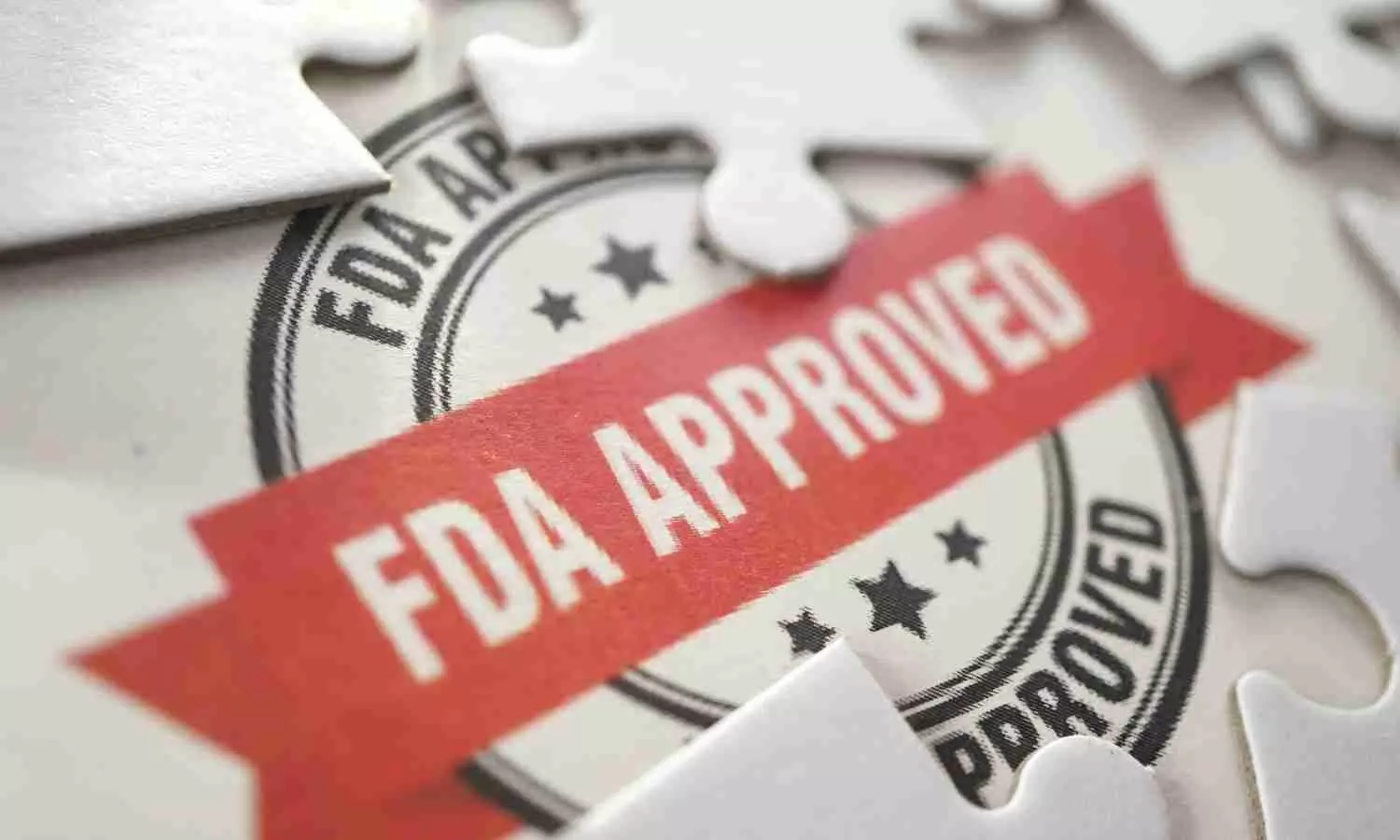
Food and Drug Administration (FDA) has granted emergency use authorization (EUA) for monoclonal antibody pemivibart to prevent COVID-19 in immunocompromised patients.
Invivyd, Inc. (Nasdaq: IVVD), a biopharmaceutical company today announced that PEMGARDA™ (pemivibart), formerly VYD222, a half-life extended monoclonal antibody (mAb), has received emergency use authorization (EUA) from the U.S. Food and Drug Administration (FDA) for the pre-exposure prophylaxis (prevention) of COVID-19 in adults and adolescents (12 years of age and older weighing at least 40 kg) who have moderate-to-severe immune compromise due to certain medical conditions or receipt of certain immunosuppressive medications or treatments and are unlikely to mount an adequate immune response to COVID-19 vaccination. Recipients should not be currently infected with or have had a known recent exposure to an individual infected with SARS-CoV-2.
“The PEMGARDA EUA marks a transformational moment for Invivyd and for the many moderately to severely immunocompromised people who are vulnerable to COVID-19 disease in the U.S. This EUA milestone represents strategic proof-of-concept for our company and platform, affirming the unique strategy we embarked on over a year ago: to use rapid innovation and surrogate markers to bring new antibodies to market repeatedly,” said Dave Hering, Chief Executive Officer of Invivyd. “PEMGARDA is the first authorized monoclonal antibody from our proprietary platform approach. We are committed to ongoing process improvement while working with global regulatory agencies with the aim to increase the speed and efficiency of new mAb candidate development even further. Additionally, we are planning to explore the protective clinical benefits of mAb prophylaxis for symptomatic COVID-19 disease in future studies.”
Mr. Hering added, “We are proud that roughly one year after initiating the Phase 1 trial of our mAb now known as PEMGARDA, we are expecting to have product available for order imminently, with initial supply already packaged and awaiting final release at our U.S.-based third-party logistics provider. I’m deeply grateful to our dedicated team members who made this achievement possible and everyone else who has supported our work, especially our clinical trial participants and investigators. Finally, we also appreciate the continuous engagement from the FDA as they have worked with urgency to make this medicine available to populations in serious need.”
“People who are immunocompromised continue to be disproportionally impacted by COVID-19 even after receiving multiple vaccine doses,” said Cameron R. Wolfe, M.B.B.S., M.P.H., Professor of Medicine, Transplant Infectious Disease at Duke University School of Medicine. “I’m excited to have PEMGARDA as an additional COVID-19 preventive option for moderately to severely immunocompromised adult and adolescent patients, such as solid organ transplant recipients and those with hematological malignancies. These types of patients, among others, continue to have both an impaired response to vaccines and a higher risk for severe COVID-19 outcomes.”
“COVID-19 continues to pose a significant threat and major concern to those who are moderately to severely immunocompromised,” said Jorey Berry, President and CEO of the Immune Deficiency Foundation and a steering committee member of the Immunocompromised Collaborative. “As such, we are delighted that a new monoclonal antibody for pre-exposure prophylaxis of COVID-19 will be available soon for certain vulnerable populations.”
Multiple medical conditions or treatments may result in moderate-to-severe immune compromise and an impaired immune response to COVID-19 vaccination including, for example, hematologic malignancies (blood cancers) or treatment with immunosuppressive therapy after a solid organ or stem cell transplant.1 Observational studies have demonstrated that people with immune dysfunction have a higher risk of COVID-19-related hospitalization and death, despite vaccination, than the general population.2-3
The EUA of PEMGARDA is based on the totality of scientific evidence available, such as data showing that immunobridging was established in the CANOPY clinical trial and that the calculated serum neutralizing antibody titers against JN.1 were consistent with the titer levels associated with efficacy in prior clinical trials of adintrevimab (ADG20), the parent mAb for VYD222, and other monoclonal antibody products. JN.1 is currently the dominant variant circulating in the U.S. according to estimates from the Centers for Disease Control and Prevention (CDC).4 PEMGARDA (pemivibart) (4500 mg) is administered as an intravenous (IV) infusion.
PEMGARDA is Invivyd’s first authorized mAb and the first mAb to receive EUA based on a rapid immunobridging trial design that is expected to be repeatable to help address the need to mitigate ongoing viral evolution. It was developed using INVYMAB™, the company’s platform approach which combines state-of-the-art viral surveillance and predictive modeling with advanced antibody engineering. INVYMAB is designed to enable the rapid, serial generation of durable mAbs targeting conserved epitopes that could be deployed to keep pace with SARS-CoV-2 viral evolution or other viral threats. With a commitment to serial innovation, Invivyd aims to ensure that vulnerable populations, such as immunocompromised people, have continuous access to innovative antibody therapies.
The Company estimates it had approximately $200.6 million of cash and cash equivalents as of December 31, 2023. The estimated amounts are preliminary, have not been audited and are subject to change upon completion of the Company’s audited financial statements for the year ended December 31, 2023. In February 2024, the Company sold shares of common stock totaling $40.5 million in gross proceeds under its At-the-Market facility further strengthening the Company’s balance sheet ahead of PEMGARDA launch. Based on current operating plans and excluding anticipated cash collections from PEMGARDA sales, Invivyd expects its existing total cash and cash equivalents will enable the company to fund its operating expenses and capital expenditure requirements into the fourth quarter of 2024.
Interim CANOPY Clinical Data Update
CANOPY is an ongoing Phase 3 clinical trial of VYD222 (PEMGARDA) for the pre-exposure prophylaxis of COVID-19 which enrolled adults ≥18 years of age in two cohorts. Cohort A is a single-arm, open-label trial in adults who have moderate-to-severe immune compromise (n=306); Cohort B is a 2:1 randomized, placebo-controlled trial in which adults who do not have moderate-to-severe immune compromise received VYD222 (n=317) or placebo (n=162). The interim data presented below are subject to further analysis.
Powered by WPeMatico
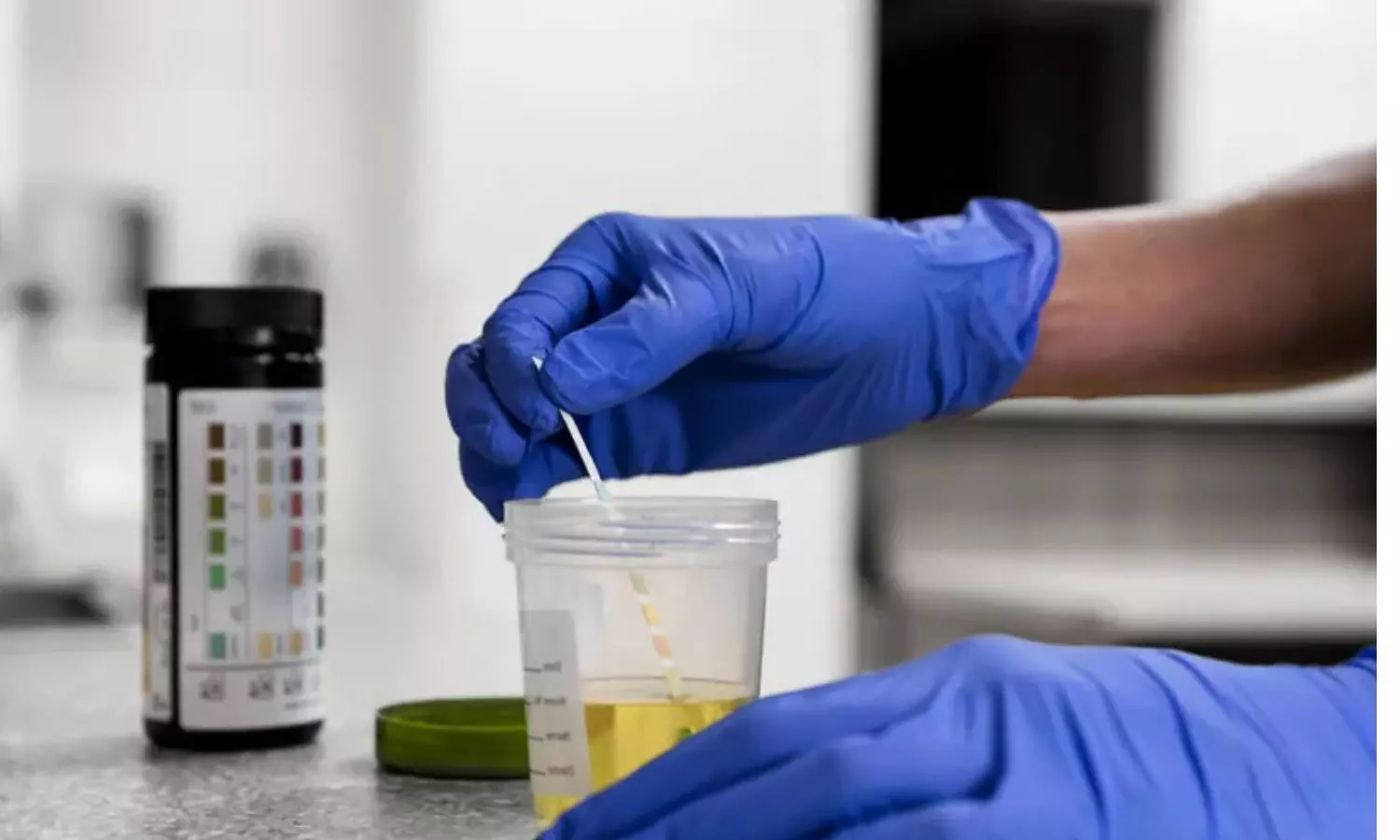
Drugs, both legal and illegal, cause millions of cases of severe intoxication every year, leading to health complications and even fatalities. Often, they are also implicated in violent and sexual harassment crimes, as well as accidents.
Obtaining detailed information about the drugs consumed by a criminal or victim is often challenging. Forensic professionals rely on drug screening techniques performed on biological samples, such as blood or saliva, to gather crucial evidence.
Today, various types of practical drug screening methods exist, each with their own unique advantages and drawbacks. For example, immunological drug screening tests can provide results quickly, but are limited to very specific drugs and often show false positives. In contrast, techniques based on mass spectrometry (MS), which analyze the mass-to-charge ratio of captured ions, tend to be more accurate. However, conventional MS approaches require careful sample preparation steps, which makes them somewhat tedious and difficult to use for non-experts.
Against this background, a research team from Japan has developed a promising drug screening technique dubbed “RaDPi-U” that can rapidly detect the presence of 40 forensically relevant drugs from urine samples. Their study, detailing the performance of their approach in preliminary tests, was published in the journal Analytical and Bioanalytical Chemistry on March 25, 2024.
Members of this research team included Professor Kei Zaitsu from Kindai University, Dr Kazuaki Hisatsune of the Forensic Science Laboratory at Aichi Prefectural Police Headquarters, Dr. Akira Iguchi of the Research Laboratory on Environmentally-conscious Developments and Technologies (E-code), National Institute of Advanced Industrial Science and Technology (AIST), Dr. Masaru Taniguchi of Nagoya City Public Health Research Institute, and Dr. Tomomi Asano of Kinjo Gakuin University.
The proposed technique is based on a combination of probe electrospray ionization and tandem mass spectrometry (PESI-MS/MS). Simply put, PESI involves capturing molecules to be analyzed using a thin metal probe, which induces a strong electric field that ionizes compounds adsorbed onto the surface of the probe. These captured molecules, or “analytes,” are transferred to a series of mass spectrometers, which determine the mass-to-charge ratio and additional structural information to determine the concentration of specific compounds (drugs).
The procedure for RaDPi-U is extremely simple, requiring only a few steps. First, 10 microliters of urine are collected from the screened individual and mixed with a substance predetermined as an internal standard, and ethanol. Then, after thoroughly mixing the sample using a vortex mixer (pre-treatment: 1.5 minutes), the same is pipetted and laid onto a sample plate for PESI. Finally, the plate is set into the PESI-MS/MS (analysis time: 1.5 minutes), which produces results in less than three minutes and automatically reports them using a built-in software.
The researchers carefully investigated the reliability and accuracy of the results for multiple concentrations of each of the 40 screened drugs. Compared to established methods, the proposed technique exhibited an equal or better lower limit of detection for all drugs, meaning that it can detect drug concentrations as minuscule as fractions of a nanogram per microliter for several compounds.
Moreover, the measurements were highly repeatable, demonstrating the reliability of RaDPi-U. This was further proved through tests with postmortem urine samples. To top things off, this method requires only one single substance as an internal standard rather than a specific compound for each screened drug, which means setting up the device is straightforward.
Overall, the team has high hopes that RaDPi-U will prove to be a powerful tool for forensic departments everywhere. “Our method boasts simplicity and user-friendliness, enabling even non-professionals to conduct drug analysis with ease,” remarks Prof. Zaitsu. “In essence, our research streamlines drug analysis to unprecedented levels, thereby fostering long-term efforts to curb drug-related crimes.” He also notes that RaDPi-U has potential not only in forensic fields but also in tasks related to clinical toxicology.
Additional efforts are already underway to make the proposed method even more useful. “While this study is preliminary and the number of currently detectable drugs is limited to 40, we are actively expanding the range of targeted substances, aiming to enhance both the speed and scope of detection,” comments Dr. Hisatsune. The researchers are also developing a similar method for blood samples, called RaDPi-B, which will be essential when urine samples are unavailable or in case of drugs for which urine-based testing is not applicable.
Let us hope these promising techniques will serve as a stepping stone toward a world free from the scourge of drug abuse.
References: Kazuaki Hisatsune, Tasuku Murata, Masaru Taniguchi, Tomomi Asano, Koretsugu Ogata, Akira Iguchi & Kei Zaitsu 10.1007/s00216-024-05215-x
Powered by WPeMatico
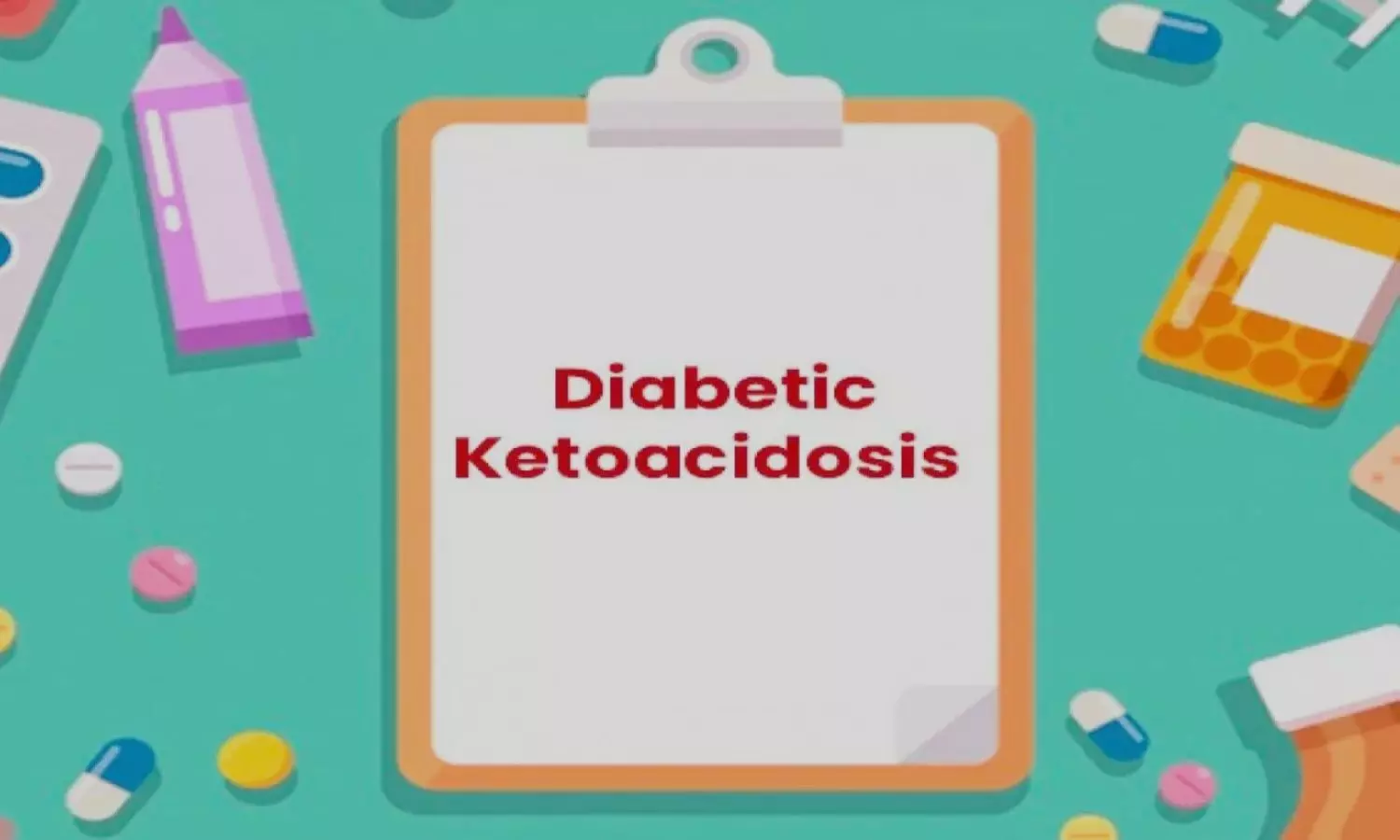
Australia: A new retrospective cohort study revealed a clinically relevant reduction in the doses of insulin administered over the first 24 hours of treatment in patients with SGLT2 inhibitor-associated diabetic ketoacidosis (DKA) compared with patients with type 1 diabetes DKA.
There seems no clarity on whether the protracted duration of SGLT2 inhibitor DKA is a result of inadequate insulin dosing or the ongoing effect of SGLt2i. The findings of the study were published online in JAMA Network Open.
“Median intravenous (IV) or subcutaneous insulin dose during the initial 24 hours of treatment was 44 units for patients with SGLT2 inhibitor-associated DKA versus 87 units for those with type 1 diabetes DKA,” the researchers reported.
Previous studies have shown a difference in the pathophysiology of sodium-glucose cotransporter 2 inhibitors (SGLT2i)–associated DKA and that of T1D DKA. T1D DKA is driven by absolute insulin deficiency, leading to hyperglycemia and ketosis. In contrast, SGLT2i DKA occurs due to a reduction in plasma glucose (PG) from urinary glucose losses, which lowers insulin secretion and stimulates glucagon secretion, leading to ketosis. PG levels in GLT2i DKA are often normal or mildly elevated. The implication is that ketosis and glycemia and ketosis are less closely linked than in T1D DKA.
Despite these differences, the American College of Endocrinology and the American Association of Clinical Endocrinologists recommend treatment with the same protocols as T1D. This may result in hypoglycemia when patients receive fixed-dose insulin infusion or inadequate insulin dosing and reduced ketone clearance when patients receive dynamic insulin infusions.
Against the above background, Mahesh M. Umapathysivam, Flinders Medical Centre, Adelaide, South Australia, Australia, and colleagues performed a retrospective cohort study to examine the natural history of SGLT2i DKA and its response to treatment.
To assess the suitability of T1D DKA protocols use, particularly the dynamic insulin infusion protocol, in SGLT2i DKA, the research team compared bicarbonate and ketone level change after 24 hours of treatment in individuals presenting with SGLT2i DKA and T1D DKA.
The study was conducted across two tertiary centers with a research interest in SGLT2 inhibitor-associated DKA, with input from the endocrine team in all cases.
The following were the key findings of the study:
“Based on the evidence presented and the safety profile of IV dextrose, it would be reasonable to increase dextrose infusion rates and concentration to allow increased insulin administration and suppression of ketosis,” the researchers wrote.
The study’s limitations are its retrospective nature and size. Prospective randomized clinical trial evidence is lacking.
Reference:
Umapathysivam MM, Morgan B, Inglis JM, et al. SGLT2 Inhibitor–Associated Ketoacidosis vs Type 1 Diabetes–Associated Ketoacidosis. JAMA Netw Open. 2024;7(3):e242744. doi:10.1001/jamanetworkopen.2024.2744
Powered by WPeMatico

China: A new study shows a strong correlation between tobacco exposure early in life, whether in the womb or during childhood and adolescence and type 2 diabetes (T2D) development later in life. The large-scale observational analysis extracted records of about 476,000 adults in the UK Biobank.
Researchers report that people with preexisting genetic factors for T2D face an even higher risk if they smoke. They say that adopting a healthy lifestyle later in life helps reduce the risk.
The data only shows correlation and not causation, however, it adds to the body of evidence that correlates tobacco exposure with poor health – specifically for those who are exposed early in life.
The findings were presented at the annual American Heart Association’s Epidemiology and Prevention/Lifestyle and Cardiometabolic Scientific Sessions in Chicago and have not yet been published in a peer-reviewed journal.
Tobacco exposure in adulthood is a well-established risk factor for type 2 diabetes, but there is no clarity on how early–life tobacco exposure implicates T2D development and whether this association varies by different genetic predispositions to T2D. Addressing these gaps may provide novel insights into early interventions of T2D.
Xuanwei Jiang and Victor W. Zhong from Shanghai Jiao Tong Univ in Shanghai, China, hypothesized that tobacco exposure in utero and utero and childhood/adolescence stages was associated significantly with incident T2D in adulthood and there were significant interactions and joint effects between early-life tobacco exposure and genetic risk for type 2 diabetes about risk of T2D.
In the prospective cohort study, the researchers used data from the UK Biobank. Self-reported questionnaires determined in-utero tobacco exposure and age of smoking initiation [never smoking, childhood (5-14 years), adolescence (15-17 years), and adulthood (≥18 years)]
The associations of tobacco exposure in utero and childhood/adolescence stages with incident T2D were estimated by multivariable Cox proportional hazard models. A polygenic risk score (PRS) for T2D was divided into tertiles, and assessed the interactions and joint effects between early-life tobacco exposure and genetic susceptibility on T2D development. The study included 475,957 participants without T2D at baseline.
The study led to the following findings:
In conclusion, in utero tobacco exposure was significantly associated with incident type 2 diabetes. Earlier smoking initiation compared to later initiation was more strongly associated with incident T2D.
“The risk of type 2 diabetes was jointly determined by the early-life tobacco exposure and genetic predisposition to T2D,” the researchers wrote.
Reference:
https://www.abstractsonline.com/pp8/#!/20343/presentation/114
Powered by WPeMatico
